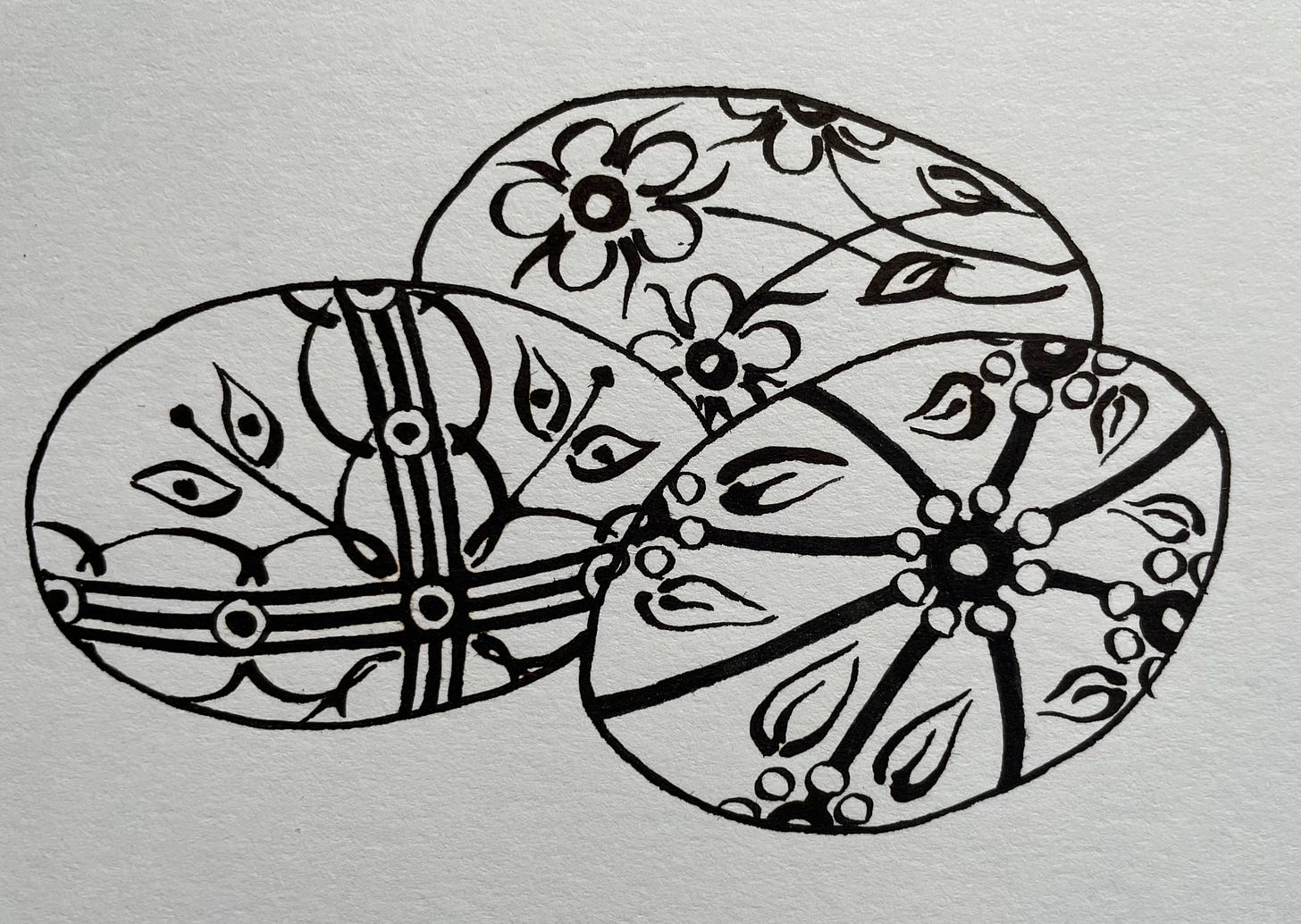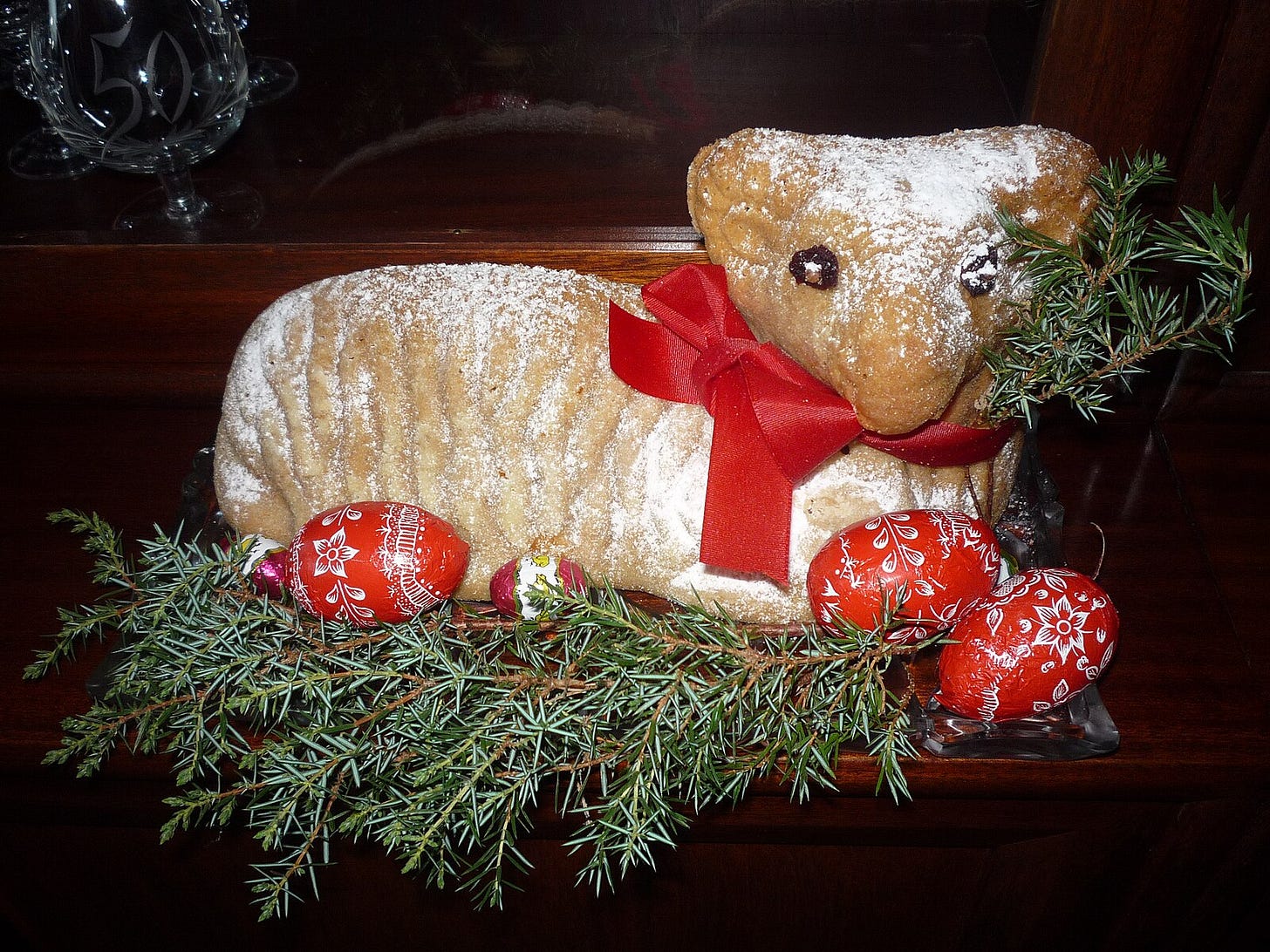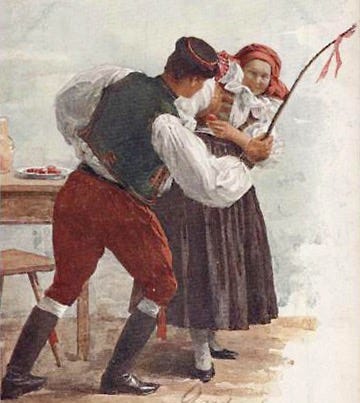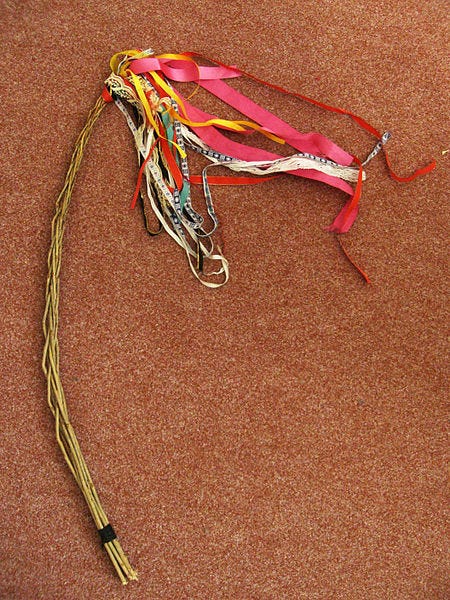Czech Easter Eggs, by Magdalena Bezdekova, 2004
At the age of 17, I read about the Easter tradition of egg-rolling in a wonderful compendium titled Folklore, Myths and Legends of the British Isles (AA/Readers Digest, 1977). Keen to have a go, I ventured forth on Easter Monday 1979 with a small group of friends, each clutching a boiled, painted egg. But we faced a significant hurdle, as we lived in Grimsby in north Lincolnshire (or Humberside, as it was known between 1974 and 1996). There are no hills here.
We had few options. None of us had a car, and the nearest contour that would pass for an egg-worthy incline was eight miles away at Ashby Hill. Undeterred, we went to nearby Waltham, where even water struggles to flow down the so-called hill, and by rolling our eggs like bowling balls, we managed to break them all fairly quickly.
In later life, I rolled eggs with my eldest son in Buxton, Derbyshire, and our family later sampled the hardboiled delights in Shotover Country Park in Oxfordshire during the annual Easter egg-roll. Trips up hills, armed with painted eggs, on the Eynsham-edge of the city and in nearby Forest Hill were among the simple joys of our annual calendar of events.
The simple rules of egg-rolling make Snap look like a Mensa exam. You roll the eggs down a hill, and the last one to shatter is the winner. That’s it. When an egg breaks and its yolk continues to roll down the hill, it is known as a yolker; although I suspect this might be terminology unique to the Sullivan clan’s 50-year-old tradition.
Traditional egg-rolling crops up in various places in the UK equipped with inclines, and the day used to be known as Egg Monday in Scotland. It is yet to crack the tough terrain of north Lincolnshire, though.
As my children were rolling Easter eggs from the age of one, the tradition followed us when we relocated to Czechia. Plenty of hills here, but no fellow egg rollers, so we have entire hillsides to ourselves.
However, there are alternative and no-less strange traditions to navigate in these parts.
The original whip-round
To provide a thumbnail sketch of the traditional Easter diary in Czechia, the Easter (Velikonoce) season begins with spring cleaning on Ugly Wednesday (Škaredá středa), followed by Green Thursday (Zelený čtvrtek), traditionally associated with green foods but marked these days by consumption of the slightly less healthy green beer. This is a strong Pilsner-style lager, traditionally brewed with nettles or other herbs to alter the colour. The green tint is commonly ommitted, though, or green food-colouring is added (as in St Patrick’s Day green beers in the USA). Green Thursday beers are brewed in small quantities for this specific day.
From Green Thursday evening to White Saturday (Bílá sobota), boys used to visit houses shaking traditional wooden rattles called řehtačka and collecting money. White Saturday is also the day for baking traditional Easter treats, including nadivka stuffing, made from nettles, marjoram and wild herbs mixed with breadcrumbs, eggs and smoked meat; mazanec, a sweet bread made with butter, milk, and rum-soaked raisins; and beránek, a cake shaped like a lamb. The beránek crops up in shops at the beginning of March, and not many households bake their own these days.
Velikonoční beránek. This file is licensed under the Creative Commons Attribution-Share Alike 4.0 International license.
On Easter Sunday (Neděle velikonoční), girls boil eggs and decorate them with traditional painted patterns, while boys make willow whips (pomlázky), which are also available in local supermarkets for those less inclined to weave the willow. On Easter Monday (Pondělí velikonoční), boys of all ages travel from door to whip girls with their pomlázky. The younger whippersnappers sing traditional Easter songs and are rewarded with painted eggs and sweets, while the older celebrants accept donations of snacks and alcohol. Gone are the days when boys would ambush girls in the street, but the related tradition of throwing water over each other is still observed in some places. The folkloric significance of the whipping is that it brings health and fertility (pomlázka means ‘rejuvenator’).
These days, the whipping is largely symbolic, with gentle contact between human and willow deemed sufficient to observe the tradition. However, Magda has none-too happy memories of over-enthusiastic pomlázky wielded by men several plum brandies into their day’s work. So, in our household, having served the traditional snacks and shots on our first Easter Monday in the country, we conveniently find an annual reason to not be at home when the men and boys do the annual whip-rounds. My son Theo joins the village procession, however, and invariably returns with a huge stash of painted eggs and sweets. He assures us that the whippings are gentle, symbolic strokes these days.
Rather than harp on endlessly about how unwelcome and demeaning the whipping tradition might be, the girls in our neck of the woods have begun visiting houses with pomlázky on Palm Sunday (the one before Easter), draining the sweet-and-chocolate supplies before the boys take to the streets two days later. In my first year, I was ambushed by six enthusiastic preteens with pomlázky and have since learned to stand back.
A Pomlázka in use; by Marie Gardavská, 1910
Whipping traditions are not unique to Czechia, but whichever way you approach it, it’s a ceremony very much at odds with the mores of the modern world. Weaving a pomlázka could be likened to carving a pumpkin at Halloween, a simple observance of tradition. But no one hits you over the head with the pumpkin afterwards, and there’s no subtext of keeping the female population fit and fertile as if they were livestock. The preservation of a harmless tradition and the reality of beating someone’s arse with a whip tread a fine line here.
When I first raised these points with one of the long-time residents in our village, they accused me of grasping the wrong end of the proverbial pomlázka. It wasn’t to do with beating women, they said, it was to do with visiting everyone in the village to retie the social bonds each year. My observation that the prospect of tying bonds and wielding whips was not painting a wholesome image in my foreigner’s brain did not go down well.
I was told to sod off and roll my eggs, so I hereby invite all of Lincolnshire and the other flatlands of England to come and join me on these vast, steep, Czech hillsides, egg in hand.







